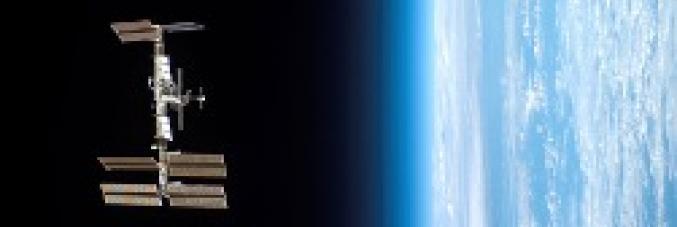
New perspectives for the design of electronic and atomic devices
12.07.2023
The article published in Nature Reviews Physics by Luca Salasnich and Andrea Tononi entitled Low-dimensional quantum gases in curved geometries contextualizes the concepts of curvature and geometry of so called ‘ultracold’ atoms and offers prospects for future theoretical research. Luca Salasnich is a professor at the University of Padua Department of Physics and Astronomy ‘Galileo Galilei’ and Andrea Tononi is a researcher in the Laboratory of Theoretical Physics and Statistical Models at the University Paris-Saclay.
Analyzing the new research directions of the physics of cold atoms, the article shares results of experiments conducted over the last 3 years that study gases trapped in curved geometries. In fact, in 2022, a gas of rubidium atoms confined near an ellipsoidal shell was produced for the first time. The experiment in question took place inside the International Space Station, and was controlled remotely from Earth by researchers at NASA. The fundamental interest behind the research on ultracold gases in curved geometries is the understanding of how curved geometry can be modified in properties of physical systems, for example raising the temperature below that triggers superfluidity and superconductivity.
As explained by the two authors, there are considerable scientific and technological perspectives related to the manipulation of spatial curvature and curved geometry across diverse materials, including those that are fluid and solid.
Salasnich explains, “Our work highlights various phenomena, including superfluidity and superconductivity, and how they can be controlled by changing the spatial curvature of the material in which they occur. Indeed, at ultra-low temperatures, the absence of electrical resistance (superconductivity) is observed in certain materials, and therefore the electric current flows without friction. The same thing happens in these experiments with atoms, where there is an absence of viscosity (superfluidity). The critical temperature below which there is the absence of friction, i.e. the absence of electrical resistance and viscosity, can in particular be controlled by changing the spatial curvature of the material.”
Salasnich concludes, “This could lead to repercussions in the design and construction of new electronic and atomic devices. For example, there is a new research sector, called atomtronics, which seeks to reproduce the electronics that are currently done with electrical devices but with atoms, with the advantage that with atoms it is easier to obtain the wave of macroscopic matter which produces complete coherence and superfluidity.”



